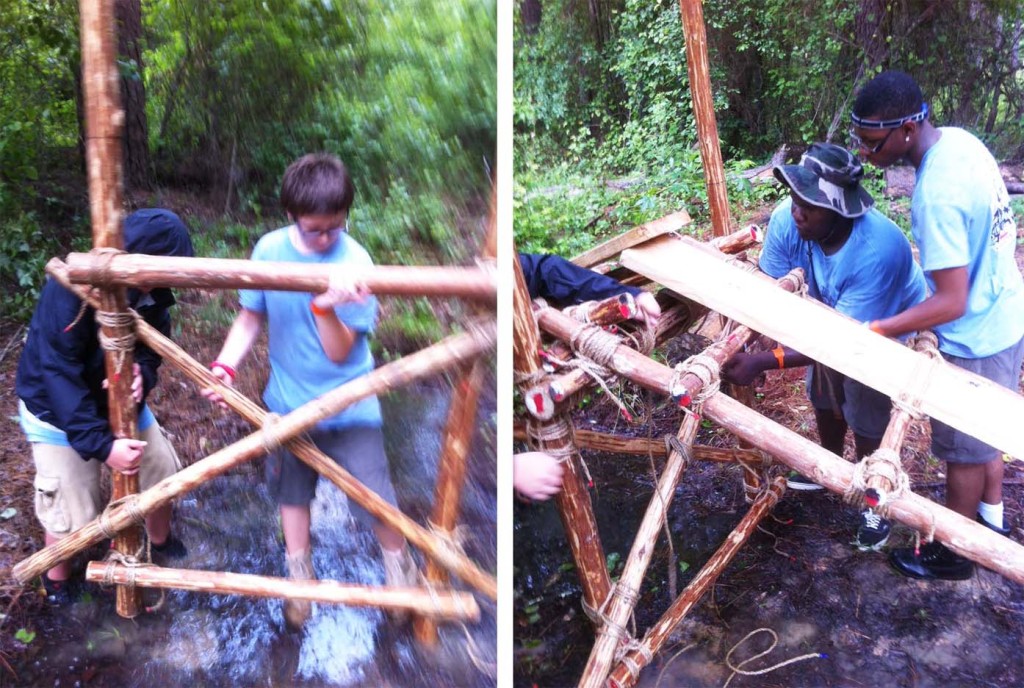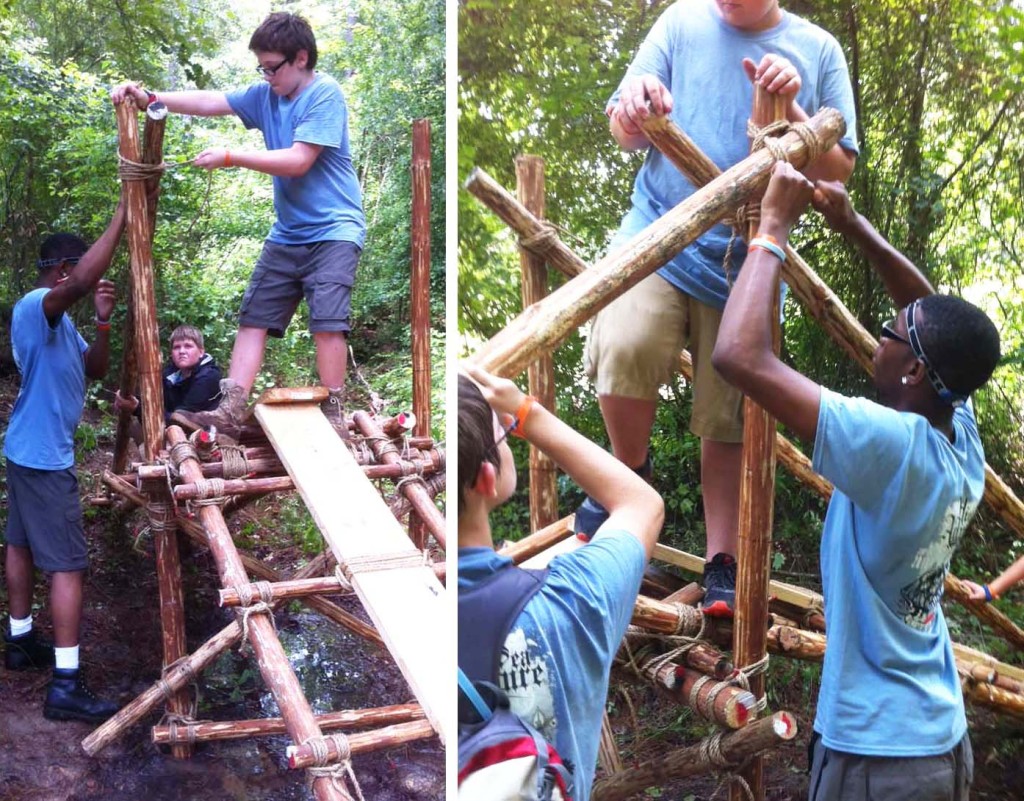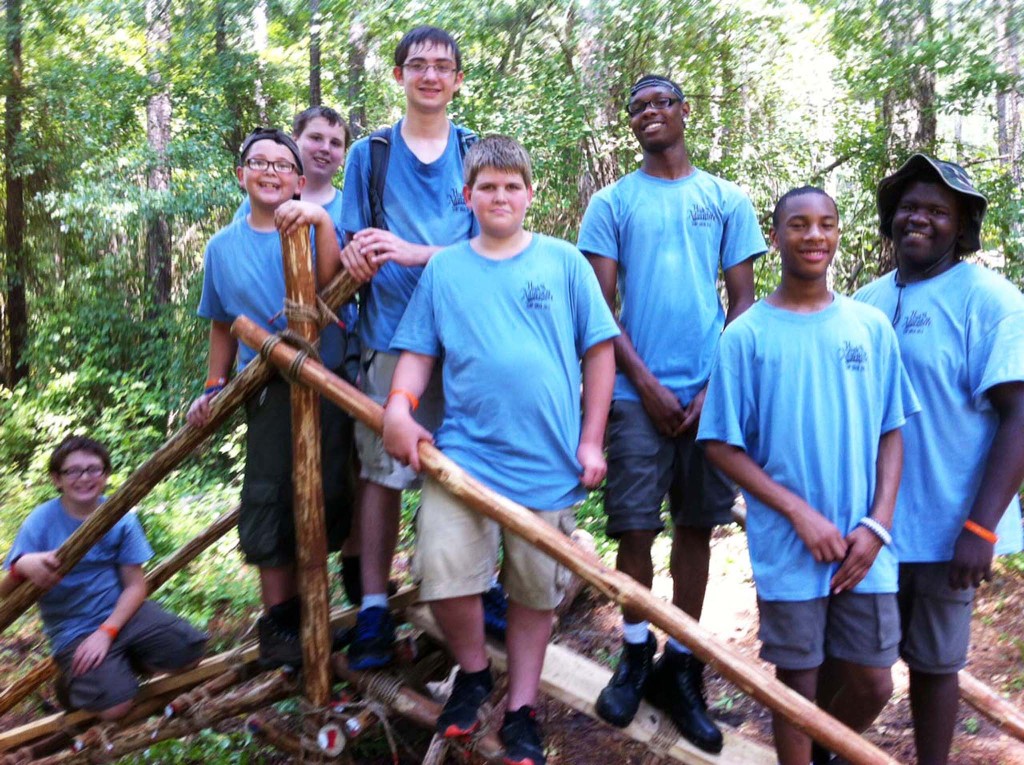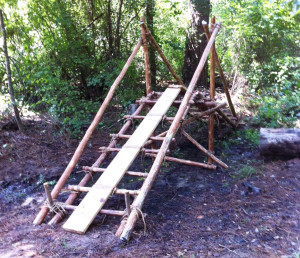 This simple crossing bridge uses only a single trestle and two walkways. The legs of the trestle are extended up above the walkways to provide a way to attach handrails. The length of the spars listed for the walkways and trestle will be enough to build a bridge that will span a creek or ravine that’s up to 4 feet deep and 18 feet wide:
This simple crossing bridge uses only a single trestle and two walkways. The legs of the trestle are extended up above the walkways to provide a way to attach handrails. The length of the spars listed for the walkways and trestle will be enough to build a bridge that will span a creek or ravine that’s up to 4 feet deep and 18 feet wide:
- two 8 or 10-foot x 3-inch trestle legs
- one 4-foot x 3-inch trestle transom
- one 4-foot x 2-inch trestle ledger
- two 6-foot x 2-inch cross braces
- four 10-foot x 3-inch walkway lateral spars
- twelve 3-foot x 2-inch walkway cross spars
- four 3-1/2-foot x 2-inch walkway cross spars
- two 10-foot x 2-inch x 10-inch walkway planks
- four 12-foot x 2-1/2-inch handrails
- four stakes
This project can be broken into four subassemblies: the trestle, the two walkways, and the handrails.
Trestle – The legs for the trestle should be spars that are about 3 inches in diameter and 8 to 10 feet long. When choosing these spars, take into account the depth of the creek you’re crossing. The distance from the base of the legs to the top ledger (transom) on the trestle should be about 1 foot higher than the level of the banks of the creek. This will allow the walkways to slant up. Then allow an additional 4 feet in height on the legs from the top ledger up to the top of the legs for attaching the handrails.
The top ledger of the trestle should be about 3 inches in diameter since it also acts as the transom and carries all the weight of the walkways and the person using it. The bottom ledger can be smaller: a 2-inch diameter spar will work here.
Walkways – The two walkways are assembled as separate subassemblies (refer to walkways). Note: make sure the 3-1/2-foot cross spars at the ends of the walkway extend far enough out to attach both the stakes and the handrails without interfering with the passageway.
Assembly – To assemble the bridge, set the trestle in the center of the creek. Heel in the bottoms of the trestle legs by setting them in holes approximately 4 to 6 inches deep. This will prevent the trestle from shifting, and is also a way to level the transom spar as the trestle is set in place so the walkways are level.
Next, put the walkways in position from both sides and lash the walkways’ underspars to the transom (top ledger) of the trestle in three places using strop lashings. (A strop lashing is easy to tie. Halve the rope, place the midpoint behind what you’re lashing, wrap both ends around the spars a few times and finish with a square knot.)
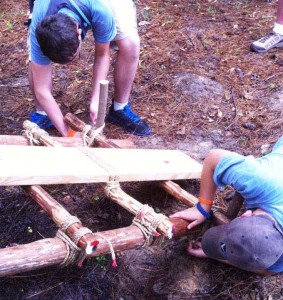 Then drive stakes at the other end of the walkways. Lash the ends of the cross spars on the walkways to the stakes with strop lashings.
Then drive stakes at the other end of the walkways. Lash the ends of the cross spars on the walkways to the stakes with strop lashings.
Handrails – Finally, handrails are provided to help those crossing the bridge and also add strength to the structure of the bridge. When the handrails are added, they form triangles with the walkway and the trestle leg. These triangles produce a strong structure that prevents the bridge from racking. Lash the handrails to the top of the trestle legs with square lashings and to the stakes with simple strop lashings.
